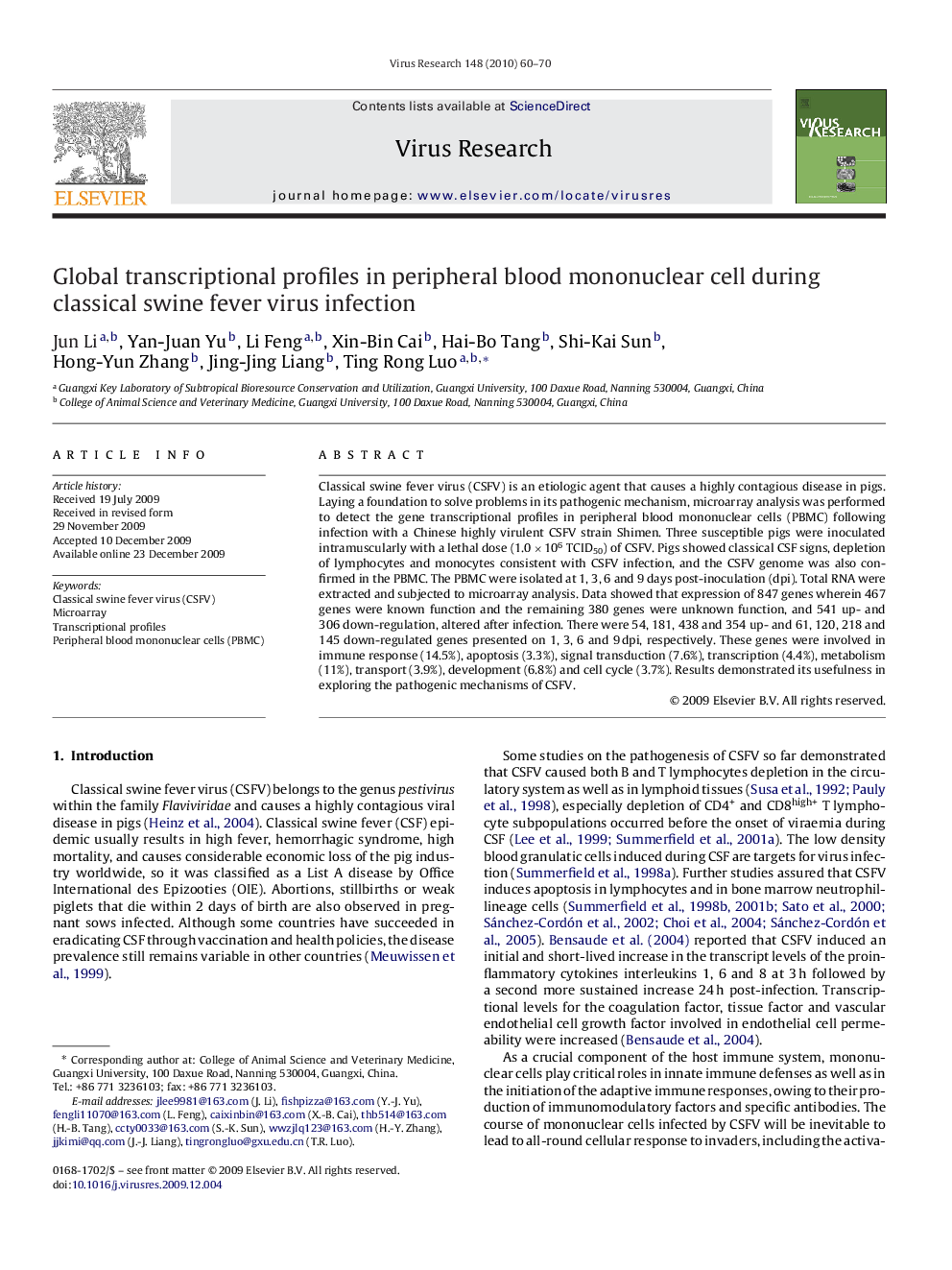| Article ID | Journal | Published Year | Pages | File Type |
|---|---|---|---|---|
| 3429813 | Virus Research | 2010 | 11 Pages |
Classical swine fever virus (CSFV) is an etiologic agent that causes a highly contagious disease in pigs. Laying a foundation to solve problems in its pathogenic mechanism, microarray analysis was performed to detect the gene transcriptional profiles in peripheral blood mononuclear cells (PBMC) following infection with a Chinese highly virulent CSFV strain Shimen. Three susceptible pigs were inoculated intramuscularly with a lethal dose (1.0 × 106 TCID50) of CSFV. Pigs showed classical CSF signs, depletion of lymphocytes and monocytes consistent with CSFV infection, and the CSFV genome was also confirmed in the PBMC. The PBMC were isolated at 1, 3, 6 and 9 days post-inoculation (dpi). Total RNA were extracted and subjected to microarray analysis. Data showed that expression of 847 genes wherein 467 genes were known function and the remaining 380 genes were unknown function, and 541 up- and 306 down-regulation, altered after infection. There were 54, 181, 438 and 354 up- and 61, 120, 218 and 145 down-regulated genes presented on 1, 3, 6 and 9 dpi, respectively. These genes were involved in immune response (14.5%), apoptosis (3.3%), signal transduction (7.6%), transcription (4.4%), metabolism (11%), transport (3.9%), development (6.8%) and cell cycle (3.7%). Results demonstrated its usefulness in exploring the pathogenic mechanisms of CSFV.
